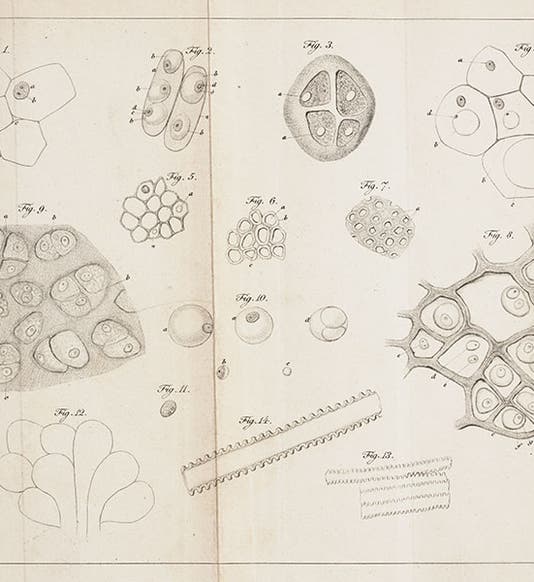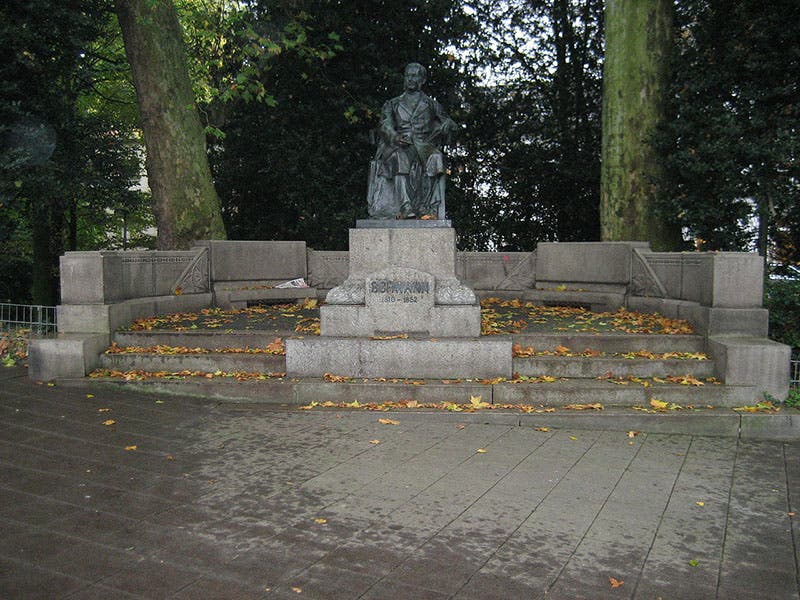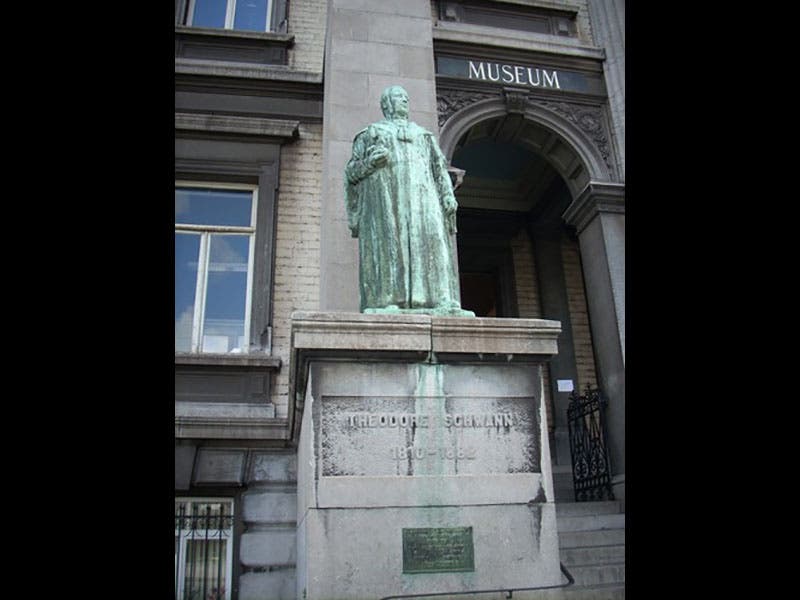Scientist of the Day - Theodor Schwann
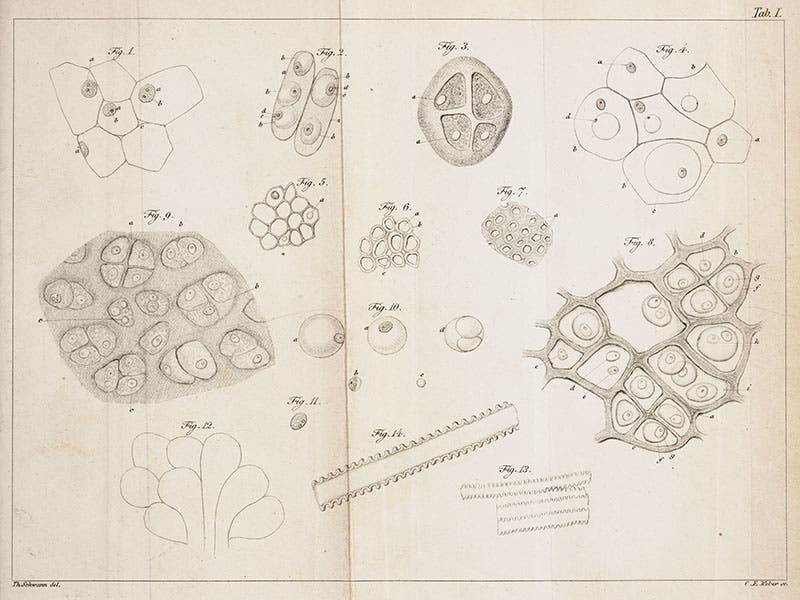
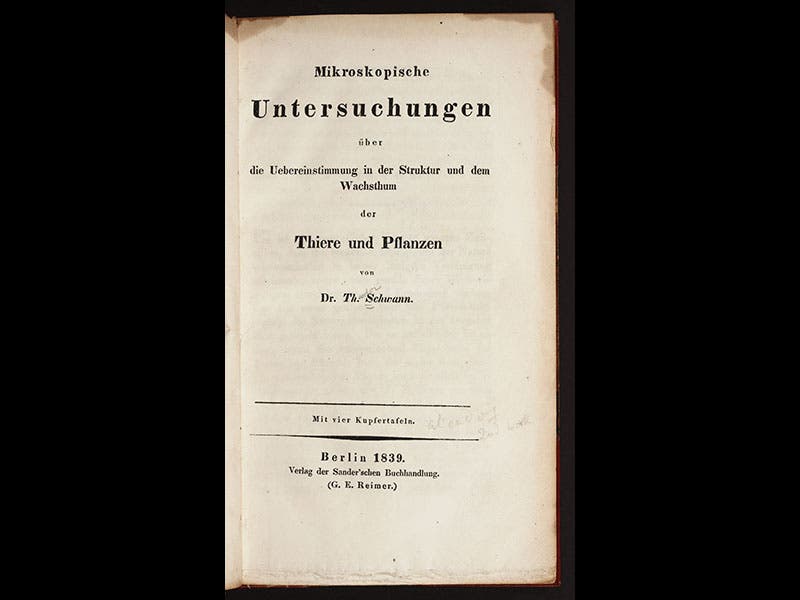

Theodor Schwann, a German microscopist and anatomist, was born Dec. 7, 1810. Schwann is widely acclaimed, along with the botanist Matthias Schleiden, as one of the founders of modern cell theory, although we now know that there were others, such as the Czech biologist Jan Purkyne (Purkinje to med students) who made major contributions to cell theory that should be more widely acknowledged. But Schwann made one of the most emphatic statements that the basic unit of all living tissue is the cell, in his book, Mikroskopische Untersuchungen, published in 1839, with four plates showing a variety of animal cells (first image). We have a lovely copy of this work in the History of Science Collection (second image), as well as an 1847 translation into English, Microscopical Researches (third image), which also includes part of Schleiden's treatise on cells in plants.
There is a statue of Schwann in his birthplace of Neuss am Rhein (fourth image) and another in Liège, where he taught for many years (fifth image). Schwann also discovered pepsin, the first animal enzyme known, and revealed that yeast is a living organism. All of his discoveries were made between 1834 and 1839, before he was 30 years old.
Dr. William B. Ashworth, Jr., Consultant for the History of Science, Linda Hall Library and Associate Professor, Department of History, University of Missouri-Kansas City. Comments or corrections are welcome; please direct to ashworthw@umkc.edu.

